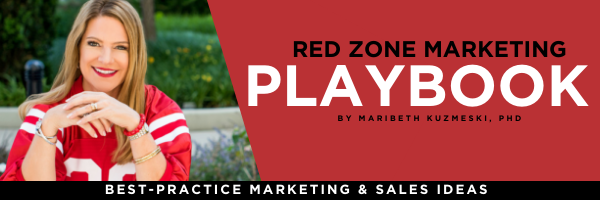Part 5: Content Marketing
Bringing it all together! Every day we are seeing more financial advisors venturing into content marketing. Why? Well, it’s a complete, albeit slightly complex, proven way to generate new, qualified prospects. So, let’s go over the basics of what you need to know and how to get started.
Learn how to use content marketing to attract your best clients:
1. What is Content Marketing?
Content marketing is a strategic marketing and business process focused on creating and distributing valuable, relevant, and consistent content. Its purpose is to attract and retain
a clearly defined audience and ultimately drive profitable customer action. It is a way to use content like blogs, articles, whitepapers, guides, videos, podcasts, webinars, infographics, ebooks, and social content to relay valuable ideas and create relationships – rather than explicitly selling a product or service.
2. What are Common Objectives of Content Marketing?
Content marketing uses a marketing funnel method for moving your prospects through six stages of engagement. You begin by gaining awareness, increasing exposure, driving people to your website, building your list, building your pipeline of qualified prospects and ultimately, generating new revenue.
3. Getting Started with Content Marketing
Here are some of the basics for getting started with content marketing.
- Specifically Define Your Target Audience: What are their needs, wants, challenges, problems, questions, and interests? Where are they on social media (Facebook, LinkedIn, etc) and what may be interesting to them?
- Generate Interesting Content Ideas: Using keyword research tools like SEMRush’s Keyword Magic Tool, Google Keyword Planner or Ahrefs Keywords Explorer (there are many more as well), determine the longtail keywords that your target audience could be using in their online searches. Longtail keywords are very specific and usually drive highly targeted visitors that are likely to be interested in your content. Then, write or record content and design offers using these longtail keywords.
- Promotion and Action: Where will your content appear and how will people be able to take action? Will you use paid advertising on social media or search engines, or will you try to engage organic traffic to your content? Do you have an email list to share your content? And, finally, what call to action will you have to lead them further into your funnel? A report, whitepaper, checklist, etc?
- Content Workflow: How will you manage the content you are planning on, what has been written or recorded, and how can you keep track of everything? We use a Content Workflow & Calendar in Smartsheet. You can create your own. It could look something like this:
4. Capturing Information from Prospects
If people are interested in your content, use your call to action (free report, etc.) to capture their email address. By capturing their email address, you can proactively reach back out to them in the future with an offer that meets their needs and/or continue to build and nurture the relationship. Also, it is best to capture at least a first name along with the email address so you can merge tags in your email system so that each email is personalized with the recipient’s first name.
5. Nurturing the Relationship
Once you have captured an email address, it’s time to nurture and build the relationship. You can do so by providing more value and increasing engagement over time. This can be done by delivering content they find interesting and continuing to offer your valuable calls to action.
You may send an email newsletter with your latest blog posts, provide a series of video tips for investing best practices, or invite them to an educational webinar you are hosting.
You also want to drive your leads to eventually take the final step in the content marketing funnel – to convert.
6. Convert Prospects Into Clients
Convert is the last stage in your content marketing funnel. You’ve led your prospect through consuming your content. You’ve given away as much valuable content as you can. Through your content, you’ve built trust, proved expertise and made a connection with your prospect. A conversation is the next logical step.
To enable this final ask, you want to make sure you have created an easy-to-access call to action to set up an appointment, have a conversation, or get started. After the lead schedules a meeting with you, they convert out of your marketing funnel and enter into the sales process where you close them, and they become a client.
Watch for next week’s blog on Using a Content Marketing Quickstart Worksheet.
Maribeth Kuzmeski, PhD, President of Red Zone Marketing, is a marketing strategist, advisor to financial services companies, bestselling author of nine books, and a professional speaker rated as a Top 25 C-Suite Speaker as seen in Meetings & Conventions Magazine. She speaks on topics including marketing, branding, sales, and customer service.
Recent Articles:
The Financial Advisor’s Guide to Digital Marketing and Prospecting – Part 4
The Financial Advisor’s Guide to Digital Marketing and Prospecting – Part 3
The Financial Advisor’s Guide to Digital Marketing and Prospecting – Part 2
The Financial Advisor’s Guide to Digital Marketing and Prospecting – Part 1



